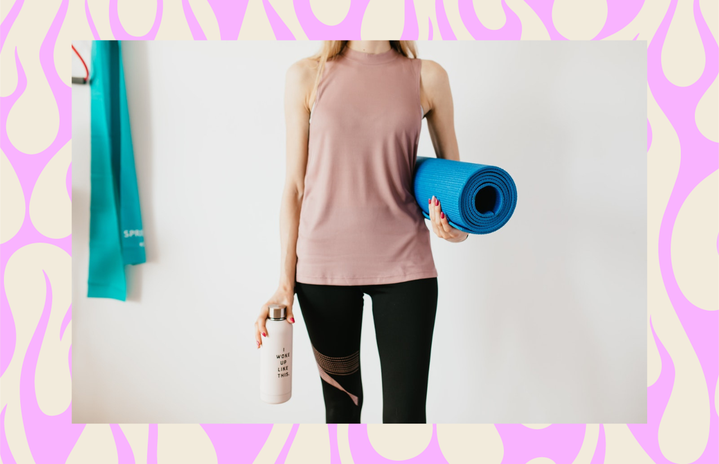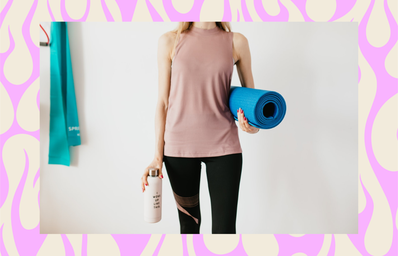The TikTok tag #Pilates has nearly 1.4 billion views and counting, with people sharing their Pilates workout routines and their results. TikTok creators like @imsweatyandiknowit and @pilatesbody_laguna have built their platforms on educating other users on various Pilates’ exercises and its benefits. And while a majority of Pilates classes do cost money, people like @amandablauerpilates are sharing their favorite Pilates exercises on TikTok for you to try at home.
Pilates has existed for nearly 100 years and is gaining popularity daily with the industry in the United States being worth about $9.31 billion. The global Pilates and yoga studios market is also expected to generate a revenue of $269,301.80 by 2028, according to a report published by Research Drive.
Many people tend to be creatures of habit, and while an exercise routine is beneficial, it is also good to incorporate various workouts. Diversifying your workout routine can allow you to utilize various muscle groups and skills and prevent boredom. Challenging your body in a way that it isn’t accustomed to will force it to work harder since it is trying to adapt to the new activity, meaning you’ll burn more calories trying a new workout.
As always, consult a physician or a certified trainer before changing your exercise routine, and remember that it is vital to also maintain a balanced diet to give your body necessary nutrients. But if you’re looking to switch up your fitness routine or try something new, Pilates may be your answer.
What is Pilates?
According to the Cleveland Clinic, Pilates is a form of exercise and body conditioning developed by Joseph Pilates in the early 20th century to help injured dancers recover. A concentration on each movement, utilization of the abdomen and low back muscles, precise, flowing movements, and steady, controlled breathing are just some of the guiding principles of Pilates. Pilates routines may be done on a reformer, a specially-designed bed-like structure, or on a mat. Pilates emphasizes muscle toning rather than building muscle with a special emphasis on the core.
“Consistent Pilates exercise produces ideal strength that is nonrigid, balancing strength with mobility and suppleness,” certified personal trainer Jake Dickson tells Her Campus. “It allows you to move and breathe through your regular activities with greater freedom, strength, and less discomfort.”
What are the benefits of Pilates?
A 2015 clinical trial consisting of 60 participants between the ages of 18 and 50 found some health benefits of Pilates: Participants were randomly assigned to either participate in a 55-minute Pilates exercise twice a week for 90 days and take a non-steroidal anti-inflammatory drug (NSAID) or just receive medical treatment by taking NSAIDs. The study found that those who participated in Pilates reported reduced levels of pain, increased function, and improved quality of life.
“Pilates is largely known for its ability to enhance core strength as well as posture. Additionally, it is an excellent tool for anyone looking to recover from or work around any sort of new and/or past injury as it is so easily modified to meet the needs of any individual body,” Cassandra Cotta, the founder of Pilates People, tells Her Campus. “It’s also amazing at being a supplemental or support workout — meaning, if you’re a runner, we can work on things to enhance your running.”
Jacqueline Hinton, a Pilates instructor, adds, “Every exercise stretches and strengthens the body, building full body awareness, increases muscle strength and tone, improves alignment, posture, and balance, prevents injuries, increases energy, decreases stress and back pain.”
What are the benefits of Pilates compared to weight lifting?
Both Pilates and weight lifting are forms of resistance training, which can be utilized to better muscular strength. Resistance training is a form of physical activity designed to enhance muscular fitness by exercising either a muscle or muscle group against external resistance, according to the American College of Sports Medicine (ACSM).
Jesse Barnett, a Pilates instructor, prefers not to compare weightlifting to Pilates in the sense of one being better than the other because they have different benefits. “They fill in each other’s gaps and together can help someone become a strong and well-rounded mover,” he tells Her Campus. “Weight lifting can tax the body in a way that Pilates can’t because lifting allows for much greater loads on the body. When done correctly, this leads to more strength gains.”
Barnett also highlights the different benefits of weight lifting and Pilates. “However, due to the higher loads, the spine is often static. This is great for improving spinal stability, but the spine also needs to move. Pilates allows for such movement by using lighter loads on the body. This trains the core in a different but equally important way.”
Who should try Pilates?
According to Statista, about 9.08 million people in the United States participated in Pilates in 2018 alone. Certified physical trainer Rachel MacPherson tells Her Campus, “Anyone interested in Pilates should try it. If you have back pain or want to increase your core strength and stability, Pilates is a fantastic choice, so long as you’ve been cleared to try it by your doctor.”
Cotta adds, “Pilates can be used in so many different ways — rehabilitation, focused postural work, meditative stretching, a hard, sweaty workout — that there really is something for every single body and as long as the instructor is willing to work with their client to find the best movements that will both mentally, emotionally and physically resonate with that person, it’s almost always beneficial!” If you’re curious about just why Pilates is so popular on TikTok, try it for yourself to determine if it’s worth the hype or not.


